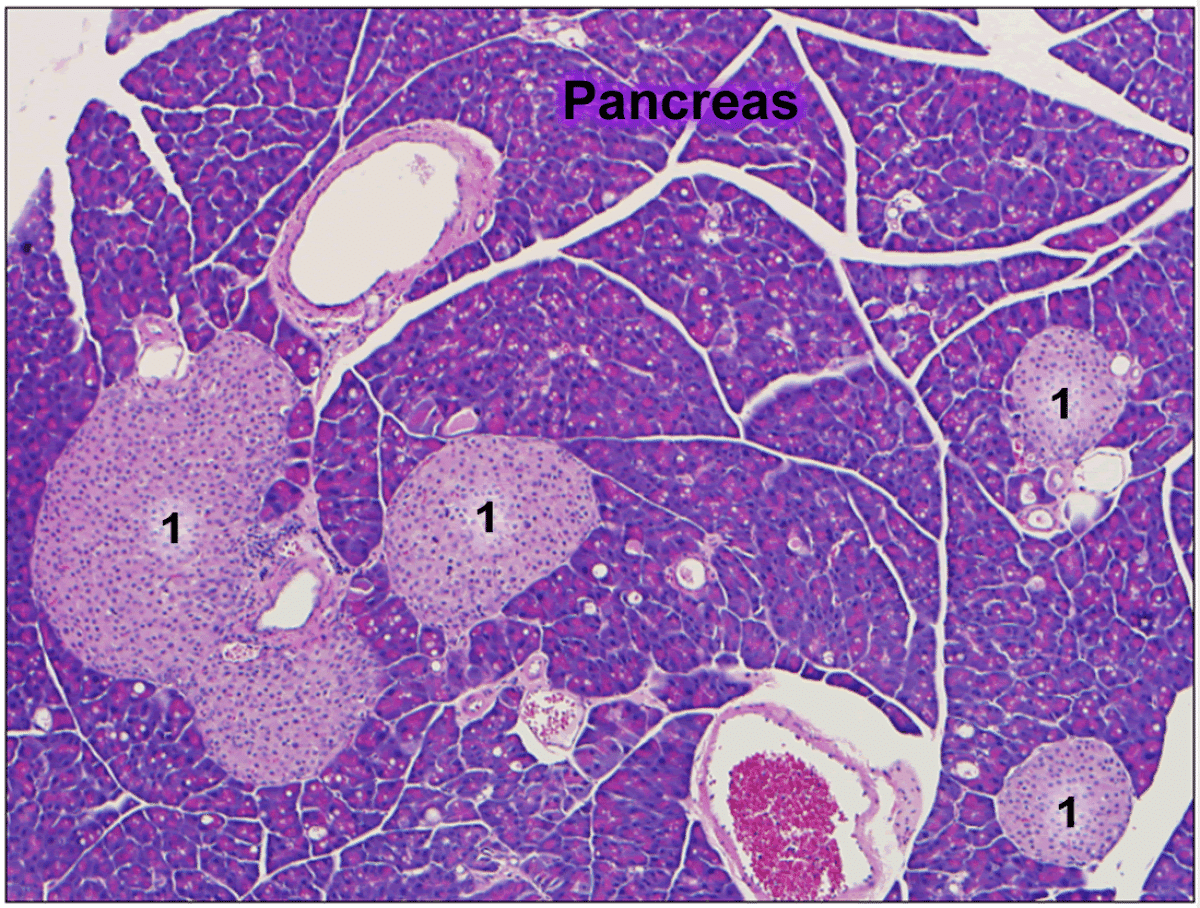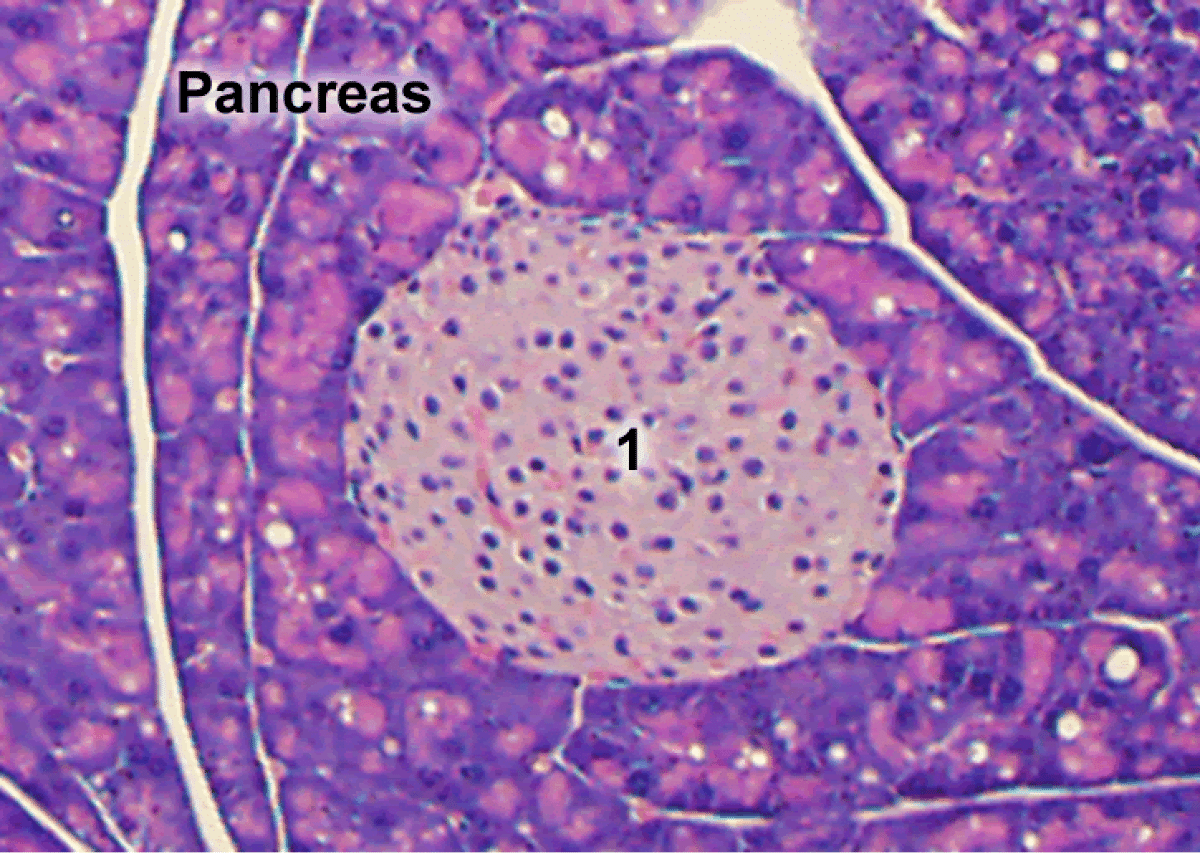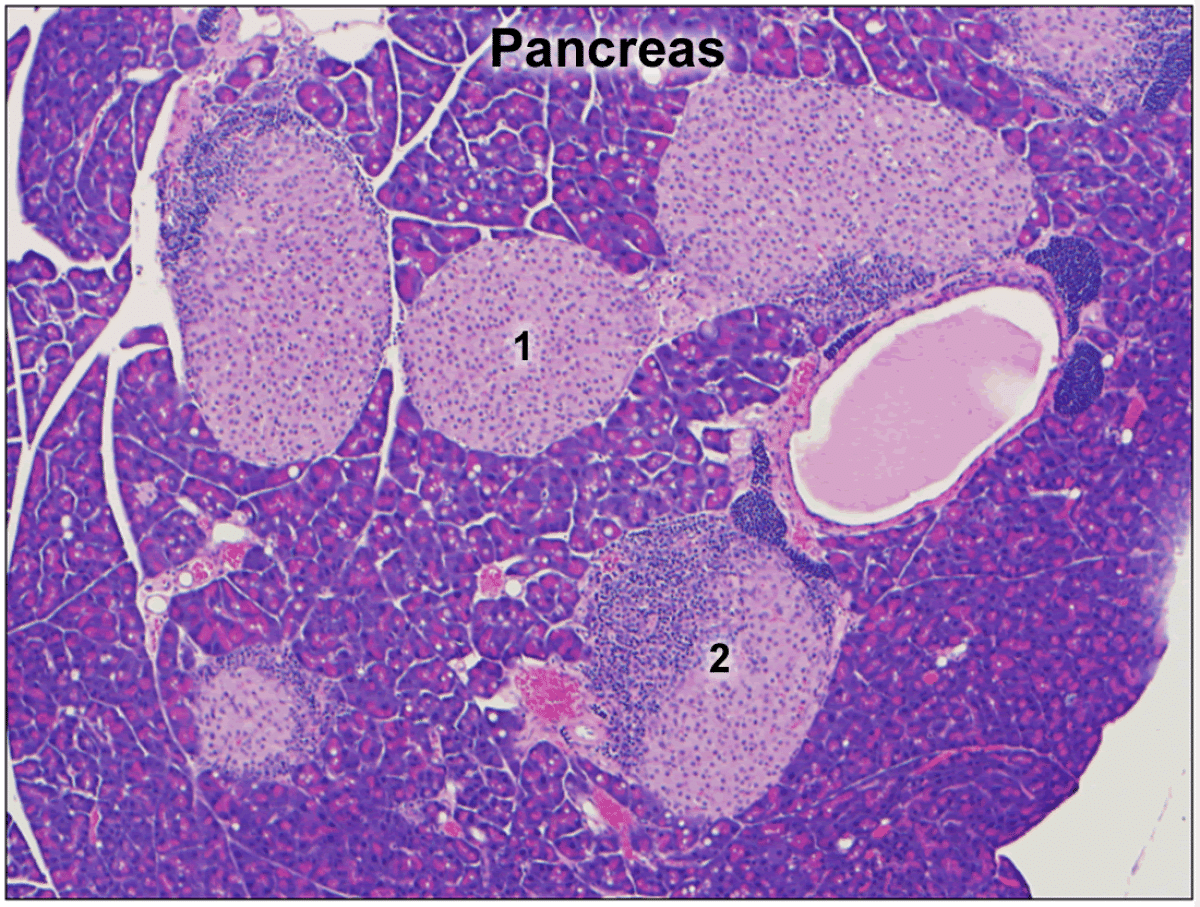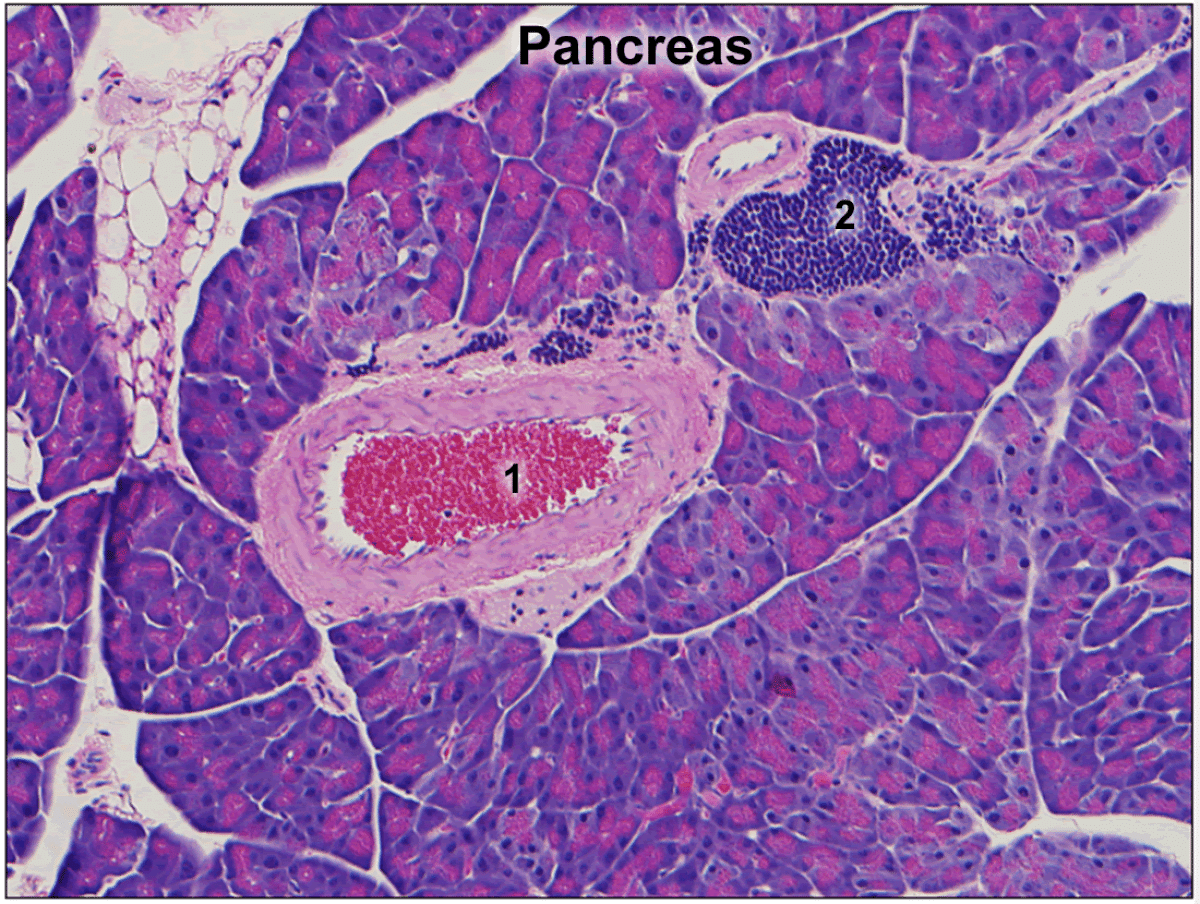Learn about Type 1 Diabetes development & progression under the microscope.
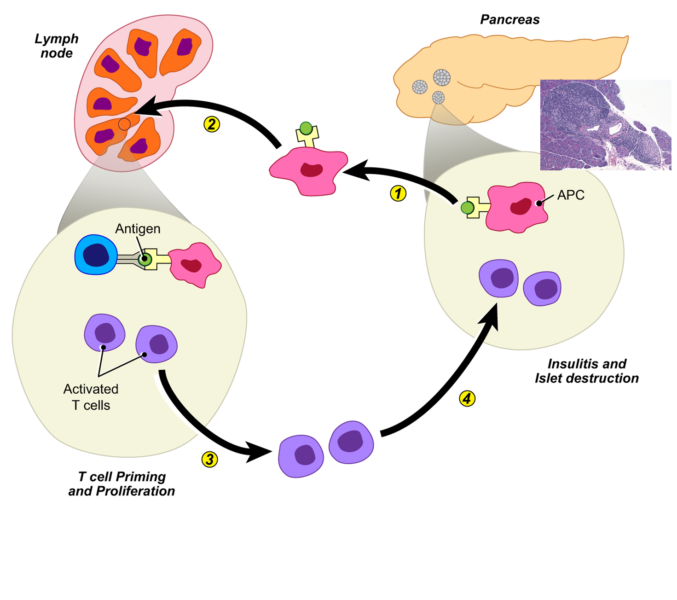
The Pathology of Type 1 Diabetes
Insulin is a hormone the body produces to utilize the sugar in our bloodstream (absorbed from the food in our gut) as an energy source. In Type 1 Diabetes, insulin deficiency develops as the immune system attacks insulin producing cells as a result of inappropriately identifying them as foreign.
1) Antigen Presenting Cells (APCs) are exposed to insulin producing cells in the pancreas
2) These APCs travel to the lymph nodes and other parts of the body where to they involved in priming other parts of the immune system such as B Cells and T Cells against insulin-producing cells.
3) These B Cells and T Cells once activated, propagate this signal and proliferate.
4) These cells then search out and destroy insulin producing cells.
Without insulin, the sugar accumulates in the bloodstream and people can become very sick and present with very serious symptoms that include dehydration, weight loss, altered mental status, and even coma.
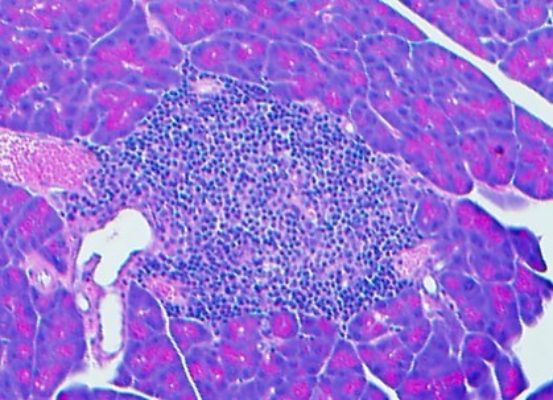
Diagnosis of Type 1 Diabetes
In order to diagnose someone with diabetes so they can receive appropriate treatment, we examine samples under the microscope to confirm the correct diagnosis (i.e., presence of certain antibodies) and differentiate Type 1 Diabetes from other conditions that may cause similar symptoms.
How Type 1 Diabetes Develops ▼
